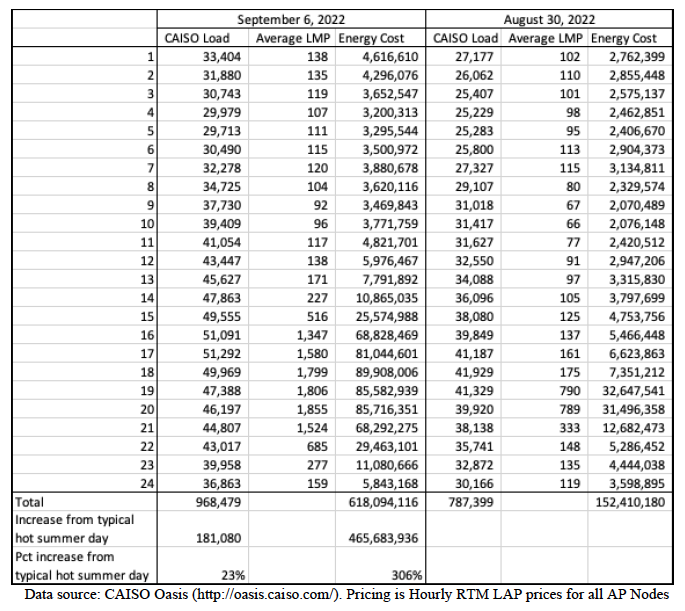On September 6, 2022, when California’s electricity demand managed by CAISO peaked at its historic highest level of more than 51,000 MW, utilities in the CAISO market spent approximately $600 million in energy payments. This single-day expenditure compares to approximately $150 million spent on energy purchases one week prior, a seasonably hot summer day without a grid emergency.
CALSSA’s analysis used the average hourly price across all pricing locations, matched to CAISO published hourly load. Actual prices vary across locations and within hours. Measuring true costs would involve five-minute load data for each pricing node, matched to the pricing for that node. However, this simplified analysis produces a credible approximation and sense of scale.
Tuesday, August 30 was used as the comparison day because it was the same day of the week one week prior, and was a hot day but not above normal hot conditions. The high temperature in Fresno on August 30 was 103 degrees, compared to 114 degrees on September 6. Comparing data from an extreme day with a day of high electricity usage but not extreme conditions demonstrate how much cost is involved in the small number of days that are beyond typical conditions – an increasingly common event due to climate change. Energy usage was 23% higher on September 6 than August 30, but costs were four times as high.
Behind-the-meter energy storage can reduce or eliminate the grid risks due to extreme conditions. Investments in energy storage have lasting benefits for the lifetimes of the systems, while extreme conditions cause enormous costs in a single day. CALSSA’s analysis shows behind-the-meter batteries supplied more than 300 MWs or 600 MWhs of power on September 6, 2022.

